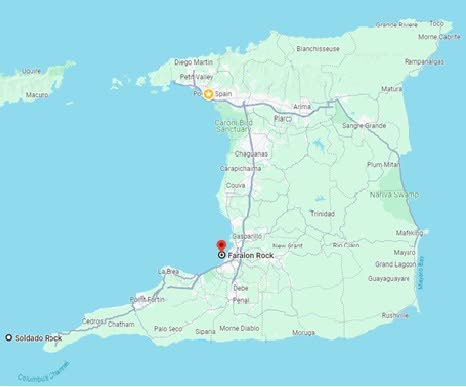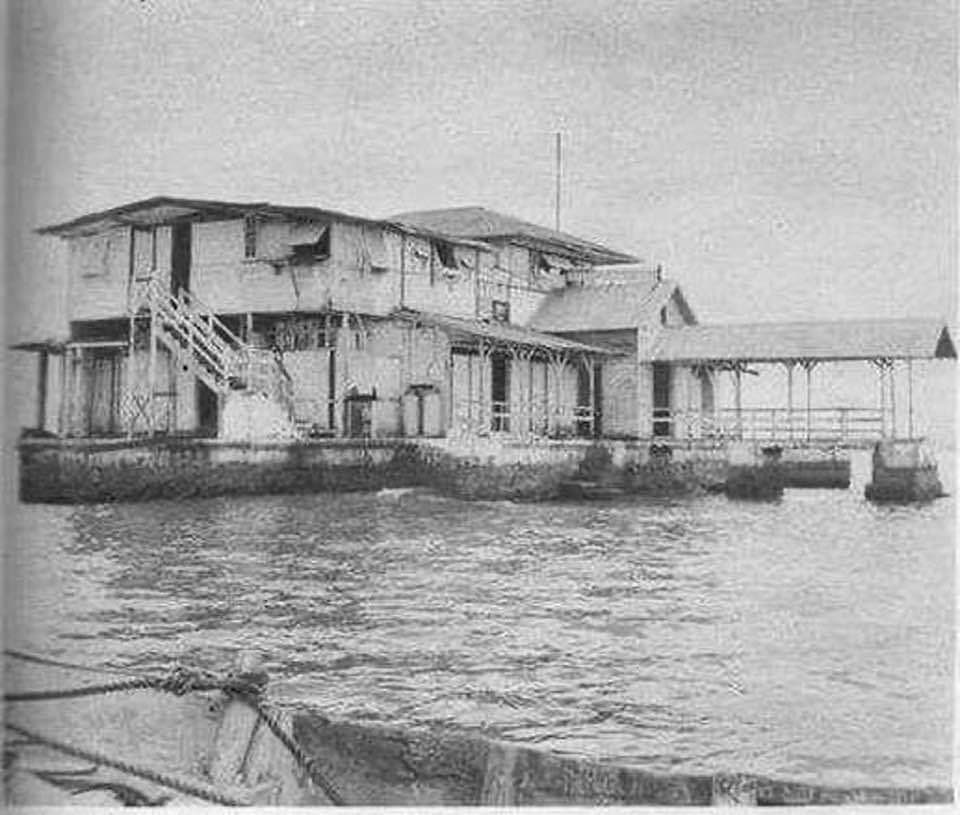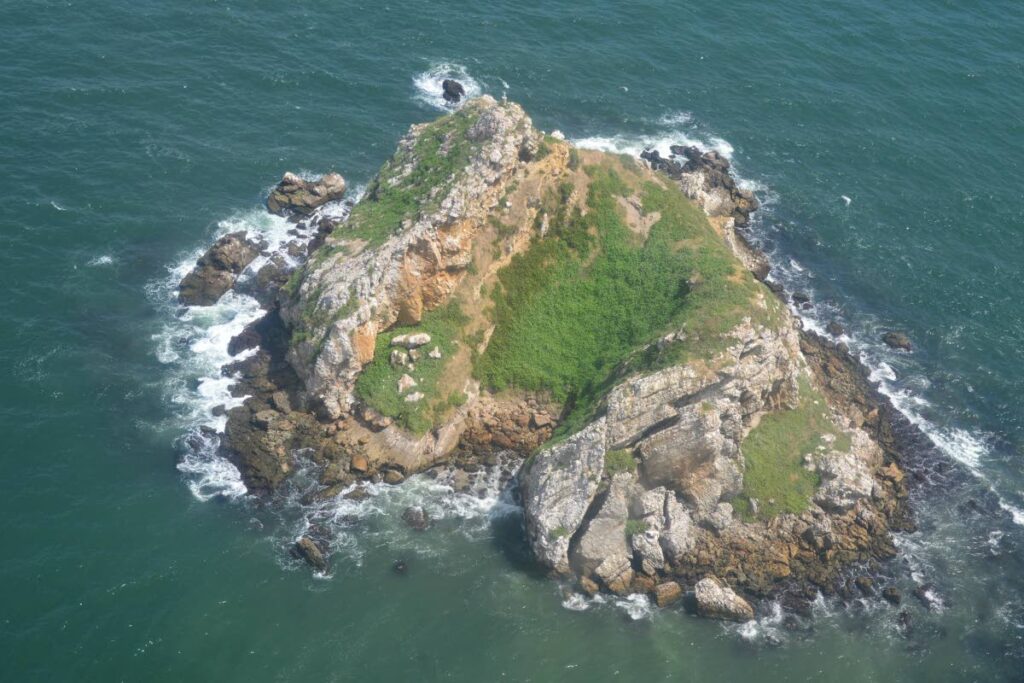Hidden gems – Gulf of Paria islands

Kami Allong and Alexandra Gray
PART TWO
Scattered throughout Trinidad and Tobago's waters are numerous smaller islands, each with its own unique history, unknown even to some citizens.
In part one of this series, we explained there are six groupings of smaller islands off TT – D Bocas, Five Islands, San Diego Islands, Gulf of Paria Islands, North Coast Island and off-Tobago islands. The column focused on the San Diego Islands – Carrera and Cronstadt.
The second part of this series will focus on the Gulf of Paria Islands – Farallon Rock and Soldado Rock.
Farallon Rock
One of the earliest known mentions of Farallon Rock was documented by Charles Kingsley, English author and academic, in his book At Last: A Christmas in the West Indies.
This book details his 1869 voyage across the Atlantic to Trinidad, where he encountered a vibrant scene at the quay in Port of Spain, and his subsequent travels across the island.
One notable episode occurred during a journey from Port of Spain to San Fernando, where Kingsley glimpsed a solitary stack of rock rising from the sea.
Farallon Rock is also identified as the Eocene San Fernando Formation on the Kugler (1959) geological map of Trinidad.
Over time, Farallon Rock transformed from a natural landmark visible from King’s Wharf into the site of an impressive building owned by prominent families in San Fernando. The property's lineage can be traced back to Leonard Manning Hobson, a notable attorney and future mayor of San Fernando, who likely constructed the house atop the rock in the 1920s.
The property changed ownership several times, being acquired by numerous wealthy San Fernando families over the decades.
The last known family to use the rock as a private retreat was the Mokund family, up until the 1970s.
Despite its remote location, the house became a hub for social gatherings and events, attracting visitors from far and wide. It stood as a testament to the area's affluent residents and their penchant for luxury living amidst the backdrop of the sea.
Easter parties, regattas and other festivities graced its halls, with guests relishing the scenic views and serene atmosphere.

However, as the decades passed, the house fell into disrepair, succumbing to the ravages of time and neglect. By the 1980s, it had collapsed entirely, leaving behind only remnants of the original rock formation described by Kingsley over a century earlier.
Despite its eventual demise, the legacy of Farallon Rock endures through tales of its former glory and the memories shared by those who once frequented its shores.
The rock, once a solitary sentinel in the sea, serves as a poignant reminder of the passage of time and the ever-changing landscape of Trinidad's southern coast.
Soldado Rock
Soldado Rock, previously known as Soldado Island, is in the Gulf of Paria, approximately 10 km off Icacos Point and north of the Venezuelan mainland.
It comprises a combination of the Palaeocene Soldado Formation and Eocene San Fernando Formation, serving as the type section for the Soldado Formation.
The island's historical significance dates back to Christopher Columbus' third voyage in 1498, when he sailed near it, naming it
El Gallo – Spanish for "the cock."
Over time, it acquired its current name, derived from the Spanish word for "soldier," owing to a shipwreck incident involving Spanish soldiers and sailors in the 17th century. It was also referred to as
Île du Soldat in the 19th century.
The lithological descriptions of Soldado Rock are:
– Bed 1: Massive pale brown and whitish, impure glauconitic limestone, algal, with oyster-shell fragments and echinoderm breccia.
Upper beds are highly glauconitic, while lower beds are not exposed at the site. These features indicate inner shelf deposition within the influence of wave action.
– Bed 2: Very glauconitic grey marble, irregularly indurated with brownish-pink mottled siltstone, sandy limestone and calcareous sandstone.
Very fossiliferous unit with large foraminifera and molluscs observed.
Soldado Rock was declared a wildlife sanctuary in 1934, primarily aimed at safeguarding seabirds, with species such as the sooty tern and brown noddy being key beneficiaries of this protection.
Notably, the island is also home to a subspecies of the short-tailed common cane mouse, first identified in 1965.
Its history is not without geopolitical disputes, as it remained a contested territory between Venezuela and British Trinidad after Trinidad became a British colony in 1797.

Negotiations to settle the border dispute began in 1939, led by Hans Kugler, and ultimately resulted in Venezuela ceding Soldado Rock to TT in exchange for Patos Island in 1942, amidst World War II considerations.
During World War II, Soldado Rock served as a target for military exercises, enduring damage from bombings and machine-gun fire.
Today, the surrounding waters are a vital area for the oil and gas industry, forming part of the Southwest Soldado Field.
However, the area's importance extends beyond geology and ecology, as it remains a contentious zone for local fishermen due to dangerous tidal conditions and ongoing piracy and drug trade activities. Despite its turbulent past and present challenges, Soldado Rock stands as a testament to the complex interplay of geopolitics, ecology and industry in the region.
The islands off TT represent a significant opportunity for tourism that has not been fully tapped into.
This article was submitted by the Geological Society of Trinidad and Tobago (GSTT).

Comments
"Hidden gems – Gulf of Paria islands"